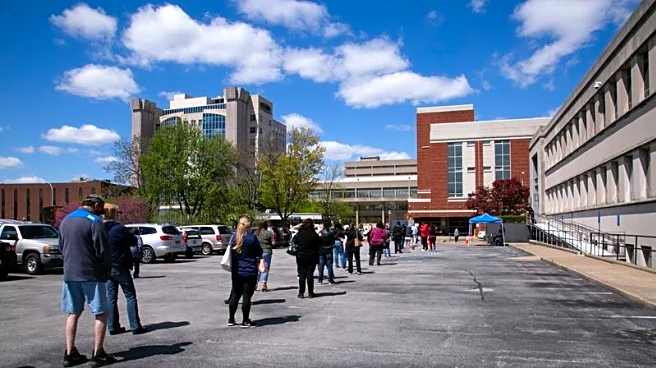What's Happening?
The private sector in the United States added 42,000 jobs in October, according to a report by payroll giant ADP. This increase marks a rebound from the previous month's revised loss of 29,000 jobs. Despite
the positive job gains, the growth was not widespread across all sectors. Education, health care, trade, transportation, and utilities led the job growth, while professional business services, information, and leisure and hospitality sectors continued to shed jobs. The service-providing sector added 33,000 jobs, whereas the goods-producing sector contributed only 9,000 jobs. Small businesses with 1 to 19 employees lost 15,000 jobs, while medium establishments with 50 to 249 employees lost 25,000 jobs. In contrast, large establishments with 500 or more employees added 73,000 jobs. Year-over-year pay growth remained flat at 4.5% for job stayers and 6.7% for job changers.
Why It's Important?
The report provides crucial insights into the U.S. labor market amid a prolonged government shutdown, which has halted the release of official employment data from the U.S. Bureau of Labor Statistics. The data highlights the uneven recovery in job growth, with certain sectors and business sizes experiencing losses. The flat pay growth suggests limited incentives for workers to change jobs, which could impact labor mobility and economic dynamism. The report also underscores the influence of various factors such as AI innovation, demographic changes, and policy uncertainty on employment trends. These dynamics are critical for policymakers and businesses as they navigate the current economic landscape.
What's Next?
ADP plans to release its employment report on a weekly basis during the ongoing government shutdown, providing near real-time insights into the labor market. This initiative aims to fill the gap left by the absence of official data and help stakeholders understand the short-term fluctuations and long-term drivers of U.S. employment. The continuation of the government shutdown may further impact economic activities and employment trends, necessitating close monitoring by businesses and policymakers.
Beyond the Headlines
The narrowing wage premium between job changers and stayers indicates a shift in the labor market dynamics, potentially affecting workers' decisions to seek new opportunities. This trend may reflect broader economic uncertainties and the evolving nature of work influenced by technological advancements and global factors. Understanding these underlying changes is essential for addressing workforce challenges and fostering sustainable economic growth.












